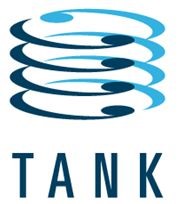I want to...
Current filter: Most popular
A to Z
Apply for a job
Biosecurity
Consents
Consultation
Contact Us
Environmental Data
Farmers Hub
Fix it or Report it
Information Request
Join an Event
Leasehold Land
Meetings
Rates
Water Metering
Have Your Say
Heretaunga water group seeks high values
Published: 11 August 2016

The debate at Tuesday's meeting of the Heretaunga and Ahuriri waterways (TANK) Group saw a strong desire to ensure swimmable water quality in the Tutaekurī River, its upper reaches, and to get all lowland tributaries swimmable as well.
Six-weekly stakeholder meetings are helping to develop a Plan Change for the Tutaekurī, Ahuriri, Ngaruroro and Karamū catchments. The 9 August meeting had a strong focus on the Tutaekurī catchment.
The Group’s aspirations are to protect all rivers and tributaries for safe swimming, recognising that further investigation of natural water conditions and management options is needed to understand if this is practical and achievable. The options to manage, associated budgets and resourcing will start to be discussed by the Group from early 2017, while the TANK Plan Change is targeted to be ready for adoption by late 2017.
Allen Smith observed the TANK Group meeting on behalf of Te Tira Whakaemi o Te Wairoa. While not a member of the Group, his interest is in the long-term sustainability of the Group's recommendations, and in relationships that solidify during and beyond the TANK Plan Change.
"It is important to me for us to keep working together, with respectful relationships alongside the challenge of setting values and the best means to manage for them. We are all kaitiaki for our land and water," said Mr Smith.
Napier City Council Environmental Services Manager Jason Strong brings a Napier perspective to his membership on the TANK Group.
"The science presentations on water quality by HBRC's Sandy Haidekker have been very detailed and informative. My attention and that of our Napier community will also be on Ahuriri Estuary catchment monitoring, and the management actions that follow," said Mr Strong.
Undesirable in-river attributes such as black-mat algae, high levels of sediment or bacteria and poor water clarity each degrade the health of aquatic life for recreation and aquatic uses. These elements can be managed in tributaries and rivers, but it may not be possible to get to a pristine state in waterways that are naturally of a poorer quality, such as the Tutaekurī-Waimate and Ohiwa Streams.
The Ngaruroro River and its tributaries were covered in detail at previous meetings of the TANK Group. The Ahuriri Estuary and Karamū catchments will be a focus of future TANK meetings.
The TANK group consists of 30-plus members from tāngata whenua (representing ngā hapū and marae), primary sector, council and environmental interests.
TANK information is available at www.hbrc.govt.nz, search: #tank
NB: This statement reflects conversations held by the TANK collaborative
stakeholder Group, which HBRC convenes.
Disclaimers and Copyright
While every endeavour has been taken by the Hawke's Bay Regional Council to ensure that the information on this website is
accurate and up to date, Hawke's Bay Regional Council shall not be liable for any loss suffered through the use, directly or indirectly, of information on this website. Information contained has been assembled in good faith.
Some of the information available in this site is from the New Zealand Public domain and supplied by relevant
government agencies. Hawke's Bay Regional Council cannot accept any liability for its accuracy or content.
Portions of the information and material on this site, including data, pages, documents, online
graphics and images are protected by copyright, unless specifically notified to the contrary. Externally sourced
information or material is copyright to the respective provider.
© Hawke's Bay Regional Council - www.hbrc.govt.nz / +64 6 835 9200 / info@hbrc.govt.nz


